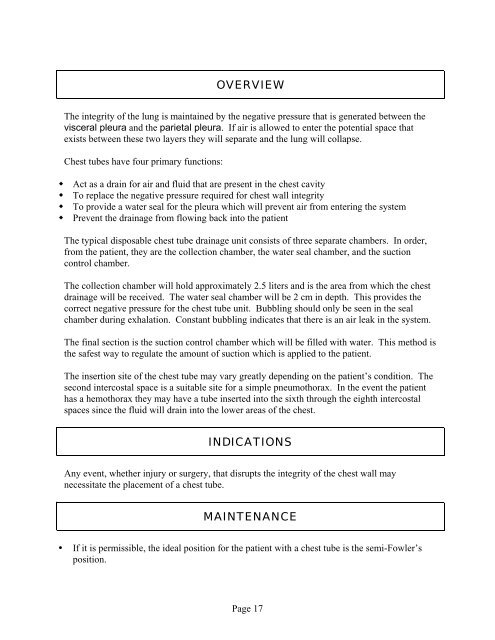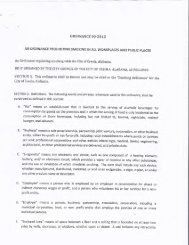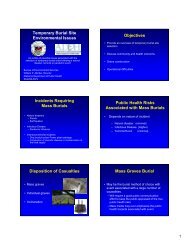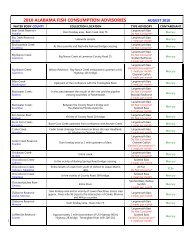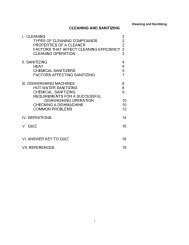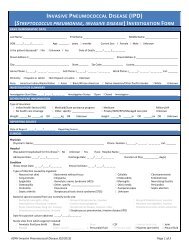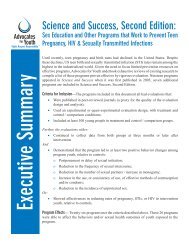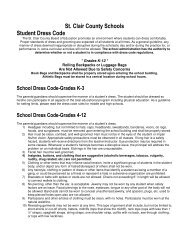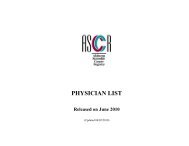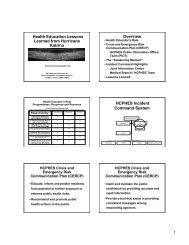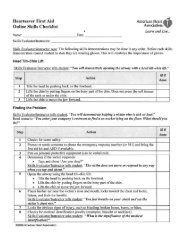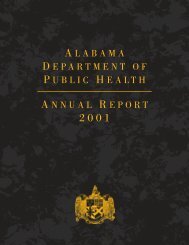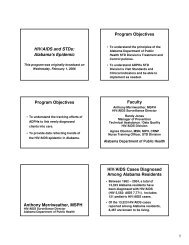CHEST TUBES
CHEST TUBES
CHEST TUBES
Create successful ePaper yourself
Turn your PDF publications into a flip-book with our unique Google optimized e-Paper software.
OVERVIEW<br />
The integrity of the lung is maintained by the negative pressure that is generated between the<br />
visceral pleura and the parietal pleura. If air is allowed to enter the potential space that<br />
exists between these two layers they will separate and the lung will collapse.<br />
Chest tubes have four primary functions:<br />
• Act as a drain for air and fluid that are present in the chest cavity<br />
• To replace the negative pressure required for chest wall integrity<br />
• To provide a water seal for the pleura which will prevent air from entering the system<br />
• Prevent the drainage from flowing back into the patient<br />
The typical disposable chest tube drainage unit consists of three separate chambers. In order,<br />
from the patient, they are the collection chamber, the water seal chamber, and the suction<br />
control chamber.<br />
The collection chamber will hold approximately 2.5 liters and is the area from which the chest<br />
drainage will be received. The water seal chamber will be 2 cm in depth. This provides the<br />
correct negative pressure for the chest tube unit. Bubbling should only be seen in the seal<br />
chamber during exhalation. Constant bubbling indicates that there is an air leak in the system.<br />
The final section is the suction control chamber which will be filled with water. This method is<br />
the safest way to regulate the amount of suction which is applied to the patient.<br />
The insertion site of the chest tube may vary greatly depending on the patient’s condition. The<br />
second intercostal space is a suitable site for a simple pneumothorax. In the event the patient<br />
has a hemothorax they may have a tube inserted into the sixth through the eighth intercostal<br />
spaces since the fluid will drain into the lower areas of the chest.<br />
INDICATIONS<br />
Any event, whether injury or surgery, that disrupts the integrity of the chest wall may<br />
necessitate the placement of a chest tube.<br />
MAINTENANCE<br />
• If it is permissible, the ideal position for the patient with a chest tube is the semi-Fowler’s<br />
position.<br />
Page 17


